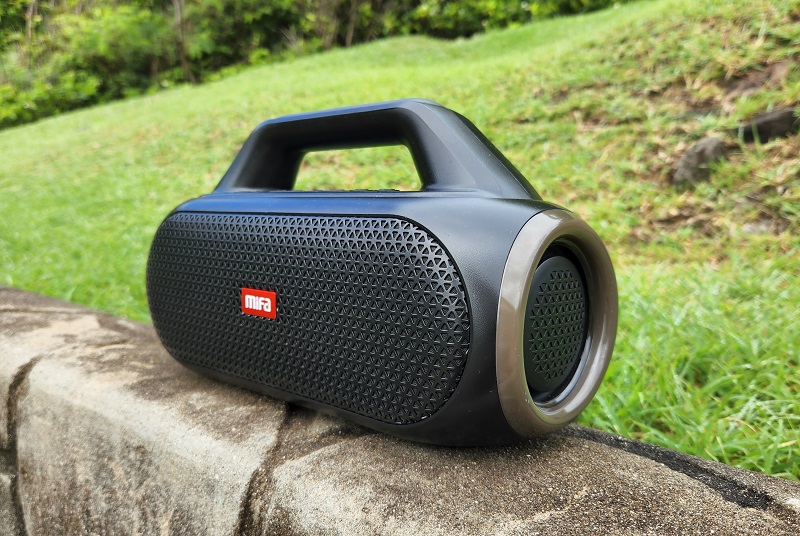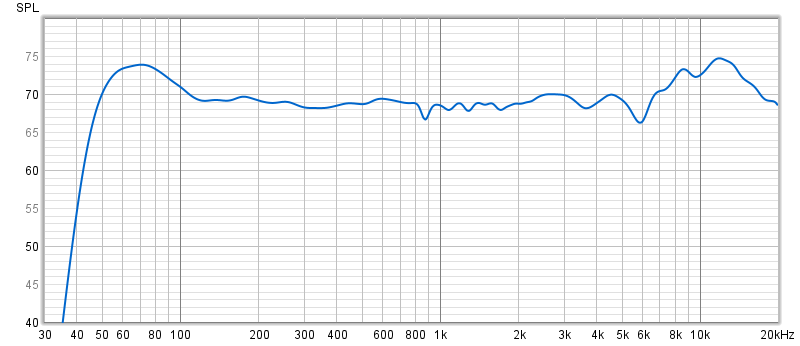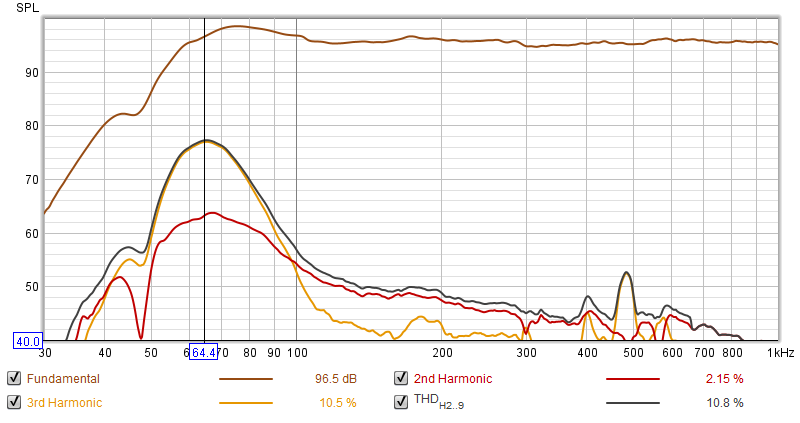Bluetooth Speakers - the Mifa Wildbox
03 April 2024

Introduction:
The Mifa
Wildbox is a bluetooth speaker that I purchased from Amazon during
June 2022. I was looking for a bluetooth speaker to replace my
old Soundblaster Roar 2, one that would have a bit more output
capability and at least offered an IPX7 rating as I wanted it to be
waterproof. I also didn't want to spend too much on a
bluetooth speaker as I suspect that that battery would likely need
replacing within a few years anyway. I also wanted one that
was a lot easier to open up and "improve" with some damping material
if necessary, because most bluetooth speakers are apparently
designed with more sound output than quality in mind. After viewing
many, many Youtube videos of various bluetooth speakers being
tested, I decided to go with the Mifa Wildbox, as it was a suitable
size, it had a built-in handle, it had separate woofers and tweeters
for each channel, it had an easily-removeable grille (which in turn
allowed easy access to its drivers and internals), and the reviews
of the Wildbox generally seemed to be positive.
Measurements:
My measurements
of the Wildbox's performance back up the generally positive reviews
that it's received. For example, pictured below is the
frequency response of the Wildbox with the 2.03 firmware at a pretty
decent output level. Note: these and other measurements were taken
*after* I added a bit of polyester fiberfill to the Wilbox's enclosure
to damp any internal reflections in the midrange region. I
used Mifa's AUX-IN input for the test signal, which was a
simple 20 Hz to 20 kHs sine-sweep generated by Room EQ Wizard's
measurement routine. Measurements were performed using a calibrated
UMM6 USB microphone. The graph shows the frequency response measured
at 1M, with a blend of the close-miked response of the drivers and
the passive radiators applied below 800 Hz.

Apart from a hump in the low bass response, and some boosted highs, the frequency response is quite flat and the distortion level is pretty low, especially considering the size of the bass drivers involved (75 mm). Response drops like a rock below 50 Hz, but this is only to be expected from a speaker that size. While the boosted highs can make the Wildbox sound a bit sharp on-axis, off-axis the treble response drops off a bit and in any case it's fairly easy to address with the built-in EQ in my Android phone.
Pictured below is the distortion curves for the Mifa Wildbox at the SPL level that I performed the frequency response measurements. The measurement was taken with the mike located very close to the speaker, centered between the two bass drivers. As such, the response shown is primarily that of the bass drivers.

As can be seen from the graph, apart from a small "blip" just under 500 Hz, measured distortion remained very low until the bass region, where the additional excursion requirements start taking their tool, with the THD peaking at just above 10% between 60 Hz and 70 Hz. While 10% sounds like a lot, most people have enough trouble noticing this level of distortion in pure tones at bass frequencies, and definitely won't notice it with music. Unfortunately most of the distortion seems to be odd-order distortion, suggesting that the driver's linear excursion limits were starting to be exceeded (and odd-order distortion is a lot more objectionable than even-order distortion). Nevertheless, it was possible to turn up the Wildbox's volume by an additional 6dB before the distortion started to be really noticeable at bass frequencies with the same sine sweep test. However, that it was allowed to reach objectionable levels was a curiousity to me, as I thought that Mifa would've used DSP to roll the bass back a bit at higher volume levels to prevent this from happening.

A bit of EQ applied at the source can help to make the Wildbox's response even better. Pictured is the EQ that I use on my Android phone. Dropping the bass a little (1 or 2 dB at 60 Hz), but leaving the BASS mode on allows the Wildbox to continue to produce great bass down to 50 Hz, but reduces noticeable distortion at higher playback levels, and trimming the treble response a bit IMO makes it more enjoyable to listen to for long periods.
Conclusions:
Overall I very
much like the Mifa Wildbox. It does a pretty good job at low
bass frequencies (just don't expect anything below 50 Hz), it has a
smooth overall response with low distortion at reasonable output
levels, and its minor response aberrations can be easily fixed for
the most part with the basic EQ built into an Android phone if they objectionable. It
also has an AUX-IN port and it's also equipped with RGB lighting
(which you can turn off it it's not to your liking). While its
plastic external surface and metal speaker grille are likely not to
stand up to wear and tear as long as say the JBL Extreme's fabric
shell, it costs a lot less and sounds great.
Links:
Videos:
-
Alan Ross Reviews - JBL Xtreme 3 or Mifa Wildbox for best Boom Boom?
-
Techder Audios - Mifa Wildbox (new firmware) vs. Soundcore Motion Boom
-
Techder Audios - Soundcore Motion Boom Plus vs. Mifa Wildbox
Brian Steele
03 April 2024